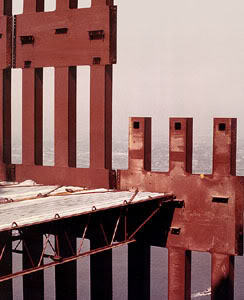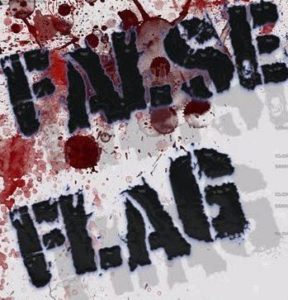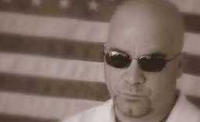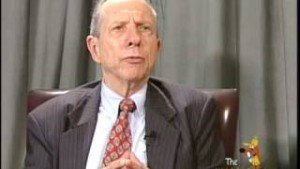From the History Commons Groups blog:
A large number of entries have been added to the Complete 9/11 Timeline at History Commons, including many that provide new details about the events of September 11, 2001, and some that describe the initial official accounts of the military’s response to the 9/11 attacks.
Air Force Secretary and Chief and Chief of Staff Learned of Attacks during Meetings
Several new timeline entries detail the actions of James Roche, the secretary of the Air Force, and John Jumper, the Air Force chief of staff, on September 11. Roche was alerted to the first plane crash at the World Trade Center during a meeting with several congressmen in his office at the Pentagon, in which the subject of Islamic fundamentalism was being discussed. Jumper, meanwhile, learned about the crashes at the WTC during a routine staff meeting, but he continued the meeting instead of responding right away.
After Jumper headed upstairs to Roche’s office, the two men were escorted to the Air Force Operations Center in the basement of the Pentagon shortly after the building was attacked, at 9:37 a.m. When they arrived at the Operations Center, they started assisting the Air Force’s response to the attacks.
A couple of entries relate to the Army’s Office of the Deputy Chief of Staff for Personnel (ODCSPER) at the Pentagon. A dozen ODCSPER officials went ahead with a 9:00 a.m. meeting, unaware of the first crash at the WTC, which occurred at 8:46 a.m., and they were not alerted by their colleagues when the second crash occurred at 9:03 a.m. Ironically, Timothy Maude, who ran the ODCSPER, was originally scheduled to attend a meeting at 9:45 a.m. to discuss what to do if a disaster should hit the Pentagon.
Crisis Actions Teams Were Activated
A number of new timeline entries describe the actions of various “crisis action teams” in response to the 9/11 attacks.
The Joint Chiefs of Staff activated its Crisis Actions Team (CAT) at the Pentagon sometime after the first hijacked plane crashed into the WTC. The Air Force’s CAT was reportedly activated at around 9:00 a.m. However, the Operations Center at the Pentagon where it worked from had to be evacuated later on and at 1:00 p.m. a replacement facility was established at Bolling Air Force Base. The Air National Guard’s CAT was activated shortly after the Pentagon was attacked and carried out its operations at Andrews Air Force Base, just outside Washington, DC.
The Army’s CAT at the Pentagon was activated after the second hijacked plane crashed into the WTC. It was reportedly “formally stood up” at 9:43 a.m. and its members then responded to the terrorist attacks. Major General Peter Chiarelli, who gave the order to activate it, was informed, shortly before the Pentagon was attacked, that a hijacked aircraft was heading toward Washington and was possibly aiming for the Pentagon.
Crew of Airborne Operations Center Thought Attacks Were Part of an Exercise
A timeline entry describes how crew members on an E-4B National Airborne Operations Center plane at Andrews Air Force Base initially thought the terrorist attacks were part of a training exercise when they were alerted to them. Their plane took off at around 9:27 a.m. and then flew to a base in Nebraska. Another E-4B took off from Andrews at around 9:45 a.m.
Meanwhile, the North American Aerospace Defense Command (NORAD) representative on the Pentagon’s air threat conference call reported, shortly after the Pentagon was attacked, that Ralph Eberhart, the commander of NORAD, had not yet declared the situation that morning an air defense emergency.
A couple of timeline entries relate to problems experienced by the plane carrying Henry Shelton, the chairman of the Joint Chiefs of Staff, that day. After Shelton learned of the attacks, his plane had to spend hours flying in “holding patterns” near Greenland and then over Canada before it was cleared to fly back into the US. It therefore only landed at Andrews Air Force Base at 4:40 p.m.
Accounts of the Government’s Response to the Attacks Were Put Forward in the Week after 9/11
A number of new timeline entries describe the initial accounts that officials provided, in the weeks after September 11, of the government’s response to the 9/11 attacks.
On September 13, Richard Myers, the acting chairman of the Joint Chiefs of Staff during the 9/11 attacks, was questioned about the military’s response to the attacks by the Senate Armed Services Committee, but his answers were vague and confused. The next day, Paul Weaver, director of the Air National Guard, provided reporters with a more detailed account in an “impromptu hallway interview” at the Pentagon.
On September 17, the Federal Aviation Administration produced a chronology of the events of September 11, which it used when it briefed the White House that day. The following day, NORAD released a timeline of its response to the 9/11 attacks, but the accuracy of this account has been challenged by the 9/11 Commission.
Ralph Eberhart outlined NORAD’s version of the events of September 11 during an appearance before the Senate Armed Services Committee on October 25, but the 9/11 Commission found that some of the information he provided that day was incorrect.
A couple of new timeline entries describe miscellaneous 9/11-related events. In 1999, alleged 9/11 hijacker Mohamed Atta tried to sell antiquities from Afghanistan in order to pay for flying lessons. And a report published one week after 9/11 stated that investigators had detected a signal from one of the “black boxes” from the planes that crashed into the WTC, although government officials have claimed that no black boxes were ever recovered at Ground Zero.
Please consider donating to History Commons, to help it continue as a leading informational source for the 21st century. To make a donation, click here.



























